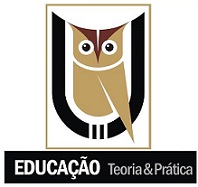Possibilities about the mediation of the spaces in the children’s play and learning in the early childhood education
DOI:
https://doi.org/10.18675/1981-8106.vol23.n43.p108-127Keywords:
Early childhood Education. Cultural Historical Theory. Play. Physical SpaceAbstract
This paper discusses the physical space of Early Childhood Education schools as mediator in the children’s learning and development process, and having research question: of which forms the spaces of the Early Childhood Education schools can be mediators of the children’s learning? The goals was: to discuss the organization of the internal e external spaces of the Early Childhood Education schools; to investigate which those spaces are intended to the children’s plays; identify how are organized and analyze the possibilities of mediation this spaces in the children’s learning and plays. The methodology envolved questionnaires with 60 teachers and 27 manageress of Early Childhood Education schools. We accomplish observations in two schools, recorded in diary of field and photography. The results show positive and negative elements of the organizations and utilization of the physical spaces in the schools. Its mediator aspect in the children’s learning can be unnoted for the teachers, if the reflexion about the quality doesn’t be related to the goal of the children’s activity. The mediation of the spaces in the children’s learning need to be part of concerns of the teachers, managers, architects, engineers and focus of the public policies.Downloads
Additional Files
Published
How to Cite
Issue
Section
License
Authors who publish in this journal agree to the following terms:
a) Authors assign copyright to the journal, with the work simultaneously licensed under the Creative Commons Attribution License that allows sharing of the work with acknowledgment of authorship and publication in this journal.
b) The policy adopted by the Editorial Committee is to assign copyright only after a period of 30 months from the date of publication of the article. After this time, authors interested in publishing the same text in another work must send a letter to the Editorial Committee requesting the release of the assignment of copyright and wait for a response.
c) This journal provides public access to all its content, since this allows greater visibility and reach of published articles and reviews. For more information on this approach, visit the Public Knowledge Project, a project that developed this system to improve the academic and public quality of research, by distributing OJS as well as other software to support the public access publication system to academic sources. The names and email addresses on this website will be used exclusively for the purposes of the journal and will not be available for other purposes. This journal provides open any other party  This work is licensed under a Creative Commons License
This work is licensed under a Creative Commons License











